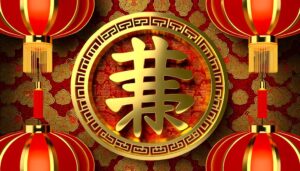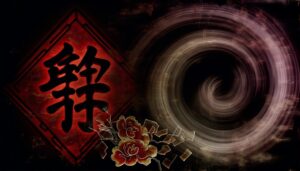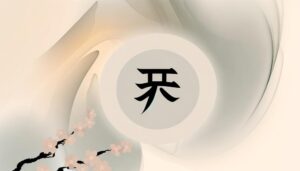What Does This Chinese Symbol Mean?
Chinese symbols, or characters, are fundamental units of the written Chinese language. They have evolved from ancient inscriptions dating back to the Shang dynasty around 1200 BCE.
Constructed from basic strokes and radicals, these characters encapsulate complex meanings, including ideals like fortune (福), love (爱), and harmony (和). Each symbol's structure follows specific principles that are necessary for legibility and cultural expression.
Regional variations and modern adaptations further enrich their significance. To fully appreciate the depth of these symbols, understanding their historical context and formation principles is essential.
Explore more to uncover the intricate logic behind each character.

Key Takeaways
- Chinese symbols are constructed from fundamental strokes and radicals providing semantic clues.
- The symbol 'fu' (福) signifies good luck and prosperity.
- Oracle bone inscriptions mark the earliest form of Chinese script from the Shang dynasty.
- Modern tools like Pleco and Google Lens assist in identifying and learning Chinese symbols.
- Symbols like 'long' (dragon) represent cultural values such as power and auspiciousness.
Historical Background

The historical background of Chinese symbols is deeply rooted in the evolution of Chinese script, which dates back to the Shang dynasty's oracle bone inscriptions around 1200 BCE. These early inscriptions represent the genesis of Chinese writing, initially used for divination and recording royal affairs.
Over centuries, the script evolved through several stages, from the Seal Script in the Qin dynasty to the Clerical Script during the Han dynasty. Each transformation reflects changes in societal needs and administrative practices. By the time of the Tang dynasty, the Regular Script had become standardized, providing a foundation for modern Chinese writing.
This historical progression not only highlights linguistic advancements but also underscores the cultural and administrative sophistication of ancient China.
Structure of Chinese Characters
The structure of Chinese characters is fundamentally based on three key elements: basic stroke types, radical components, and character formation principles. Each character is constructed from a set of standardized strokes, which are combined according to specific rules to form radicals, the building blocks that convey semantic or phonetic information.
Understanding these principles is essential for comprehending the complexity and systematic nature of Chinese script.
Basic Stroke Types
Understanding the basic stroke types is essential for mastering the structure of Chinese characters. Chinese characters are constructed from a combination of fundamental strokes, each with distinct forms and rules for their execution.
The eight principal strokes include:
- Horizontal (横, héng)
- Vertical (竖, shù)
- Downward-left (撇, piě)
- Downward-right (捺, nà)
- Dot (点, diǎn)
- Upward-right (提, tí)
- Hook (钩, gōu)
- Turning (折, zhé)
These strokes form the foundation of more complex characters, dictating the character's overall balance and legibility. Mastery of these strokes involves understanding their correct sequence, angle, and proportion.
Precision in stroke order and type is critical for accurate writing and recognition, forming the bedrock of effective Chinese literacy.
Radical Components
Building upon the mastery of basic stroke types, attention must now be directed towards radical components, which serve as the structural building blocks of Chinese characters. Radicals, numbering 214 in total according to the Kangxi Dictionary, are essential in the formation and categorization of Chinese characters.
Each radical carries semantic weight, often providing clues to the meaning or pronunciation of the character. For instance, the radical '氵' (three dots water) is found in characters related to water or liquid, such as '河' (river).
Mastery of radicals not only facilitates efficient dictionary lookup but also enhances the learner's ability to deconstruct and comprehend complex characters. Understanding radicals is indispensable for achieving proficiency in reading and writing Chinese.
Character Formation Principles
In analyzing the structure of Chinese characters, it is essential to recognize the principles governing their formation, including the syntactic relationships between radicals and phonetic components.
Chinese characters are systematically composed through various formation principles:
- Pictographs: Characters that visually represent objects, such as 山 (mountain) and 日 (sun).
- Ideographs: Characters that symbolize abstract concepts, like 上 (up) and 下 (down).
- Phono-semantic compounds: Characters combining a semantic radical with a phonetic component, providing both meaning and pronunciation clues, such as 河 (river), where 氵 indicates water and 可 suggests the pronunciation.
Understanding these principles facilitates the comprehension and memorization of Chinese characters, revealing the intricate logic behind their structure.
This knowledge is key for learners seeking deeper linguistic insights.
Commonly Used Symbols

Among the myriad symbols in Chinese culture, some have gained widespread recognition and frequent usage due to their profound meanings and historical significance. These symbols include the characters '福' (fu, meaning 'fortune'), '寿' (shou, meaning 'longevity'), and '喜' (xi, meaning 'happiness').
Each of these symbols is not merely a linguistic element but also a cultural icon, often encountered in various art forms, festivals, and everyday objects. The symbol '龙' (long, meaning 'dragon') frequently appears as well, symbolizing power and auspiciousness.
The pervasive use of these characters reflects their embeddedness in societal traditions and their role in conveying essential cultural values. Their ubiquity underscores their importance within the tapestry of Chinese cultural identity.
Symbolic Meanings
Understanding the symbolic meanings behind these commonly used Chinese characters reveals deeper insights into the cultural and philosophical frameworks that shape Chinese society. Each character often encapsulates profound concepts, reflecting values that are central to Chinese civilization.
- 福 (Fú – Fortune): This character signifies good luck and prosperity, frequently used in celebrations like the Lunar New Year.
- 爱 (Ài – Love): Beyond romantic affection, this symbol represents universal love, encompassing familial bonds and compassion.
- 和 (Hé – Harmony): Harmony is a fundamental principle in Chinese thought, promoting balance in social relationships and personal well-being.
These symbols are not merely linguistic elements but are imbued with meanings that communicate essential Chinese cultural and ethical ideals.
Regional Variations

Regional variations in the use and interpretation of Chinese symbols illustrate the diverse cultural landscapes and historical contexts within different parts of China.
For instance, the character '福' (fú), symbolizing good fortune, may have differing stylizations and associated customs in northern versus southern regions. In northern China, this symbol is often displayed upside-down to signify the arrival of fortune, whereas in southern China, its presentation may be more conventional.
Another example is the symbol '寿' (shòu), representing longevity. In some coastal areas, it is intricately combined with maritime motifs, reflecting local seafaring traditions.
These regional distinctions are not merely aesthetic but also embed localized historical narratives and cultural values that enrich the collective understanding of Chinese symbolism.
Modern Adaptations
Building on the rich tapestry of regional variations, modern adaptations of Chinese symbols reflect contemporary influences and technological advancements, reshaping their traditional meanings and applications. The integration of digital technology, global communication, and cultural exchange has led to significant transformations:
- Digital Fonts: The creation of new digital fonts for Chinese characters allows for their use in contemporary digital media, preserving their aesthetic while enhancing readability.
- Graphic Design: Modern graphic designers incorporate Chinese symbols into logos and branding, merging tradition with innovation to appeal to global markets.
- Augmented Reality (AR): AR applications enable users to interact with Chinese symbols in immersive environments, enhancing educational and cultural experiences.
These modifications ensure the continued relevance and evolution of Chinese symbols in the modern era.
Learning Tools

Various innovative learning tools have emerged to facilitate the study and comprehension of Chinese symbols, leveraging both traditional methods and modern technology. Traditional tools include flashcards and stroke order diagrams, which provide a foundational understanding of character structure.
Modern advancements have introduced digital applications, such as Pleco and Skritter, which offer interactive features like handwriting recognition and spaced repetition systems. Online platforms, including Coursera and Duolingo, provide structured courses with multimedia content to enhance learning.
Augmented Reality (AR) tools, like Google Lens, enable real-time translation and character identification using smartphone cameras. These tools collectively enhance the efficiency and accessibility of learning Chinese symbols, catering to various learning preferences and promoting deeper comprehension through diversified approaches.
Cultural Significance
The cultural significance of Chinese symbols is anchored in their historical symbolism, which has been meticulously preserved and transmitted through generations.
Understanding these symbols requires analyzing their origins and the contextual meanings they held in ancient China.
Modern interpretations and uses of these symbols illustrate their adaptability and continued relevance in contemporary society.
Historical Symbolism in China
Throughout China's extensive history, symbols have played a pivotal role in conveying cultural values, beliefs, and societal norms. These symbols are deeply embedded in various aspects of life, ranging from art and literature to religious practices and governance. Historically, they have served multiple purposes:
- Cultural Identity: Symbols like the dragon and phoenix represent power and prosperity, reinforcing national identity.
- Moral Teachings: Confucian symbols such as the Yin-Yang reflect balance and harmony, promoting ethical behavior.
- Political Authority: Emblems like the Imperial Seal signified the legitimacy and sovereignty of rulers.
These symbols are not just decorative but are integral to understanding the historical and cultural fabric of China. They encapsulate centuries of philosophical thought, social structure, and governance strategies.
Modern Interpretations and Usage
In contemporary China, symbols continue to hold profound cultural significance, reflecting both traditional values and modern societal changes. Their use extends beyond linguistics, encompassing various facets of daily life, from digital communication to branding.
For example, the character '福' (fú), symbolizing good fortune, remains prevalent during the Lunar New Year and other festive occasions. Additionally, symbols are integrated into corporate logos to convey trust and prosperity, aligning with consumer expectations.
Modern technology has further revolutionized symbol application, with emojis and digital shorthand becoming ubiquitous in online interactions. This evolution underscores a dynamic interplay between ancient heritage and contemporary practices, illustrating the enduring relevance and adaptability of Chinese symbols in a rapidly changing society.
Conclusion
The exploration of Chinese symbols encapsulates a rich tapestry of linguistic history, structural complexity, and cultural depth.
Through examining commonly used symbols and their meanings, alongside regional variations and modern adaptations, one gains insight into the profound significance these characters hold.
The intricate brushstrokes of each symbol paint a vivid picture of tradition interwoven with contemporary relevance.
Embracing advanced learning tools can bridge historical legacies with future linguistic endeavors, ensuring the continued reverence and understanding of this ancient script.





